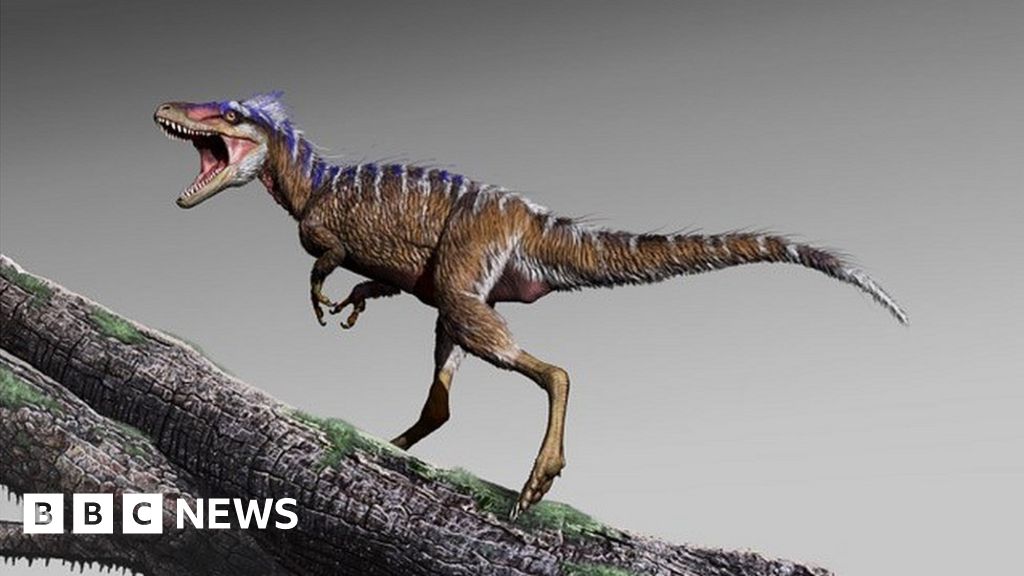
A newly discovered relative of Tyrannosaurus rex stood just over a metre tall at the hip, a study shows.
The diminutive tyrannosaur reveals crucial new information about how T. rex established itself as a dominant carnivore in North America.
Early in their evolution, tyrannosaurs were small, but at some stage, the hulking T. rex along with others emerged as apex predators.
The new fossil helps fill a 70-million-year gap in the fossil record.
Discovered in Emery County, Utah, the animal lived about 96 million years ago, during the later part of the Cretaceous Period.
Tyrannosaurs, or "tyrant lizards" - the group to which this specimen and T. rex belong - ruled the predatory roost on land during the last 15 million years before the Chicxulub asteroid slammed into the Yucatan Peninsula 66 million years ago. T. rex could reach more than 3.5m tall as measured at the hip.
But, as co-author Lindsay Zanno, from North Carolina State University, explained, it wasn't always this way: "Early in their evolution, tyrannosaurs hunted in the shadows of archaic lineages such as allosaurs that were already established at the top of the food chain," she said.
Our understanding of the evolutionary events leading up to the appearance of giant tyrannosaurs has been limited by the lack of complete fossils in North America.
Small-ish, primitive tyrannosaurs have been found in North America dating from the Jurassic Period (around 150 million years ago). By around 81 million years ago, North American tyrannosaurs had become enormous beasts. But the fossil record in between these two time periods is patchy.
The lower leg bones of the new species, Moros intrepidus, were discovered in the same area where Dr Zanno and her team had previously found Siats meekerorum, a giant meat-eating dinosaur belonging to a group known as the carcharodontosaurs. This larger predator lived during the same period as Moros.
The researchers estimate that Moros intrepidus was about the size of a modern mule deer, weighing about 78kg. It was seven years old when it died and was almost fully grown.
Although it was comparatively lightweight, it was probably very fast on its feet. "These adaptations, together with advanced sensory capabilities, are the mark of a formidable predator. It could easily have run down prey, while avoiding confrontation with the top predators of the day," said Dr Zanno.
"Although the earliest Cretaceous tyrannosaurs were small, their predatory specialisations meant that they were primed to take advantage of new opportunities when warming temperatures, rising sea-level and shrinking ranges restructured ecosystems at the beginning of the Late Cretaceous.
"We now know it took them less than 15 million years to rise to power."
The scientific paper, published in the journal Communications Biology, makes the case that these environmental changes may have led to the decline of the allosaurs - the apex predators that reigned until the emergence of big tyrannosaurs.
An analysis of Moros' place on the family tree of tyrannosaurs appears to suggest that the group may have migrated to North America from Asia.
Follow Paul on Twitter.
https://www.bbc.co.uk/news/science-environment-47321411Bagikan Berita Ini















0 Response to "Teeny T. rex relative discovered in US - BBC News"
Post a Comment